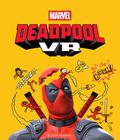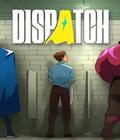Retro gaming has been having a bit of a renaissance lately. Between the classic consoles and classic game collections, it seems like everyone’s been getting into the mix. A few companies have even turned their focus to arcade machines. While Arcade 1up is creating (nearly) full size arcade machines on a budget, New Wave Toys decided to recreate the arcade experience in miniature.
Originally conceived as a Kickstarter project, the RepliCade machines are 12” recreations of full size arcade games. They’re meant to provide the arcade experience, while also being light on space. We recently had a chance to chat with the founder of RepliCade to talk about the games, as well as some of the challenges that come with shrinking arcade games down to size.
WorthPlaying: Who are we speaking with today? And what is your role with RepliCade?
Shilo Prychak: Shilo, Founder/Toy Maker on RepliCade
WP: When I was a kid, one of the "holy grail" toys was the Coleco Pac-Man mini arcade. Seeing brand new mini-arcades appear on the market is exciting. What inspired you to start working on the RepliCade and what sets it apart as a product?
SP: Our mission is to make the products we wish we had growing up. The RepliCade line is the handheld videogame experience we wish we had as kids!
WP: RepliCade units claim to run the original game software. Are you using custom SOC hardware for each game? Or do the RepliCade systems use open source emulators, like MAME, with ROM dumps?
SP: We use a custom developed closed system chip and work closely with our licensing partners to ensure the most arcade accurate gaming experience possible. Going forward, we’re focused on building up our UI with new software features like dip switch setting to further enhance the arcade machine ownership experience.
WP: In order to meet the size requirements, RepliCade units are using LCD screens. What are the technical specs on the screens you're using (type, refresh rate, etc.)? Any risk of blur or other video artifacts? Also, any risk of burn-in, given that many arcade screens are static?
SP: We experiment with many screens to find the closest match to the original CRT and vector televisions. Centipede uses a 3.5” 320*240 LCD, while Tempest is a 4” 800*480 with custom software to emulate Atari’s Quadrascan as faithfully as possible.
WP: When it comes to emulation and modern displays, input lag is always a concern. Given that arcade games were designed with CRTs in mind, what steps has the RepliCade team taken to ensure minimal input lag and a true arcade feel?
SP: Every RepliCade cabinet has a 12-18 month development cycle. We slowly dial everything in from input lag to optimizing audio and cabinet replication.
WP: What would you say to someone like me who is hesitant to try the RepliCade due to the small size? Are the controls actually useable for high level play? Or will I be fumbling around, fat fingering the inputs?
SP: The original factory arcade machines rule but we do our best to honor them in our RepliCades. If you’re like us then you’ll love the attention to detail from gameplay to cabinet material selection! People are often surprised at how functional the RepliCades are once they get their hands on it.
WP: None of the announced RepliCade units seem to have a video out, is that a product design decision or a legal one? Are the games simply not licensed for TV play? Or did you want to avoid an association with cheaply made "plug-and-play" boxes? Will we ever see a RepliCade with a video out?
SP: Video out is a feature we’ve looked at but we decided to focus on miniaturization of the original experience.
WP: Given the time that has passed, how challenging was it to track down original cabinet artwork? Were you able to use the original design assets for your games, or did you have to recreate them from reference images?
SP: We LOVE the original arcade cabinet art so a ton of research goes into art reproduction. For example, Centipede’s side art originally had a pink outline but was changed to yellow for later production runs, so we matched the pink.
WP: You announced Asteroids and Dragon's Lair machines at Toy Fair earlier this year. How do you decide what games to license? Is the goal to go for titles that are commonly available, yet perennially popular, like Street Fighter II: CE? Or will you be focusing on trying to release RepliCade versions of arcade games that have not yet seen a widespread home release, like the CPS-2 Alien vs Predator?
SP: We have projects in the works that cover many form factors you’ll remember from your local arcade. We have a multi-title licensing agreement with Atari which helped kick off our first set of RepliCades and are working closely with other companies to bring a variety of titles to life.
WP: Let's talk about licensing a little more. To many gamers that's something of a mystery. After all, if you want a game, you just pay for it, right? What are some of the challenges that you face when trying to secure a license for a game? For games that have changed hands multiple times, how do you even track down the current owner?
SP: New Wave Toys is made up of games industry veterans and we have long-time relationships with most licensors. Of course, things do get complicated when dual licensing is required. It’s a long process and some deals take longer than others.
WP: When creating a new RepliCade, how do you decide on the trade-offs between authenticity and playability? I'm thinking of Street Fighter II: CE here, and the choice to move the second joystick to a USB fight stick. While not 100% arcade authentic, it makes it easier for two players to crowd around. How far will you let yourselves go from the original cab design on a game?
SP: Gameplay is king and Street Fighter II:CE requires a combination of extra control panel space, mini-micro switch push buttons, and bat style mini-micro switch joystick to pull off moves properly.
WP: Real talk on cost here. A RepliCade runs between $100-$150 for a single game. A NeoGeo Mini is less than that and contains multiple arcade games. What is going to make a gamer decide to go for a RepliCade over a NeoGeo Mini?
SP: We see them as totally different products as we're more focused on replicating the authentic arcade cabinet experience in miniature scale as opposed to trying to fit as many games as we can into one cabinet. That includes the high-quality wood and metal construction and custom form factor of each cabinet. We do however get plenty of requests for a Neo Geo x RepliCade.
WP: Bonus round. What is your personal dream game to get in RepliCade form? No promises. No commitments. Just wondering, what is your "holy grail" that, if all the stars aligned, you would jump at the chance to manufacture?
SP: Definitely a sixth-scale bubble hockey RepliCade! Every arcade needs to have one.
Editor’s Note: Be sure to check back on Monday for our review of the RepliCade Tempest machine.
More articles about RepliCade

























